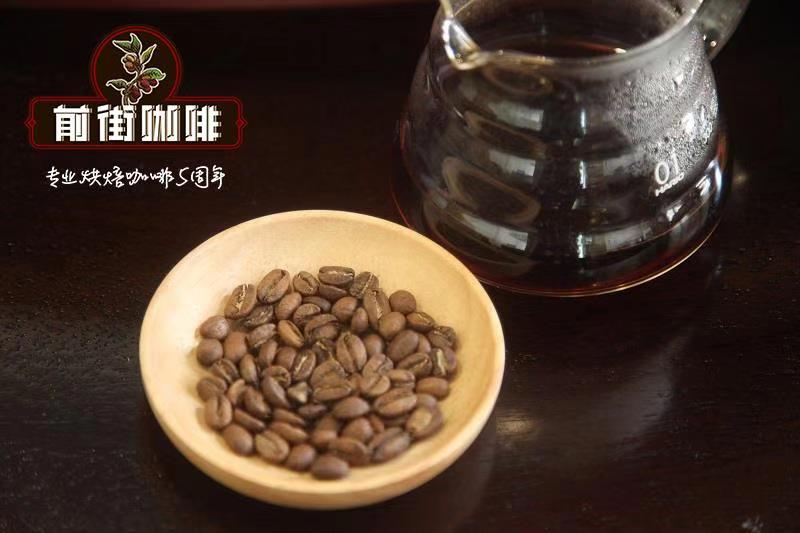Introduction to the brewing method of Yejiaxuefei Coffee

Professional coffee knowledge exchange more coffee bean information please follow the coffee workshop (Wechat official account cafe_style)
Qianjie-Ye Jia Xuefei Coffee brewing and sharing
Yejasuefei is administratively part of Sidamo in southern Ethiopia. The delicate flavor of its washed beans is famous all over the world, and the area is subdivided into four micro-regions by ECX. Most coffee grows above 1800-2000 meters. Due to the long-term reclamation, the forest area of Yejashefi is gradually decreasing, so it belongs to the densely populated area, and the main planting mode is still family mode. There are 40 cooperatives in the area, about 60,000 farmers and nearly 70,000 hectares of coffee are planting land.
With the popularity of Hama becoming more and more popular, ECX also began to divide the producing areas this year. In the early years, coffee in Cochel was sold only under the name of Yegashefi, but now it is sold in the name of Kochel. Osher purchased directly and got a lot of praise for Hama. In fact, it is in Yegasheifichel, which has become a very important washing area.
Yirga cheffe is a small town in Ethiopia, 1700-2100 meters above sea level. It is one of the highest coffee producing areas in the world and is synonymous with Ethiopian boutique coffee. As we all know, the growing environment of coffee has a great influence on the flavor of coffee! And one of the most important links in the planting environment is the elevation!
The effect of altitude on coffee beans: generally speaking, the higher the altitude, the more unique the coffee flavor will be. Take Colombia, for example, which is famous for its high-quality high-altitude coffee. Coffee farms in areas such as Nari?o are only 100 miles from the equator, but according to the Colombian Federation of Coffee growers, it is 2300 meters above sea level. How did it turn out? Bright acidity, sweetness and obvious aroma-all add more good flavor to the coffee.
Wash Yega Xuefei with Ethiopia
Country of origin: Ethiopia Ethiopia
Producing area: Yirgacheffe,Guji Zone, Oromia Guji Oromi Asia
Farm: Wote Konga Mill
Grower: Makruian Mergya
Treatment method: Washed washing
Bean seed: Heirloom native species
Planting altitude: 1800m
Baking: Light
Flavor description: green tea / clean and delicate / lemon / citrus
Parameters & techniques: powder weight 15g; medium and fine grinding (BG 6S: Chinese standard No. 20 sieve pass rate 58%); water temperature 90 ℃, powder / water ratio 1: 15; steaming with 31 g water for 30 seconds, water injection to 122g in the center of small flow, water injection to 227g when the water level is about to expose the powder bed, and remove the filter cup when the water level is about to expose the powder bed. (steaming starts) the extraction time is two minutes.
Small gift of knowledge: the reason why Yejia Xuefei is respected and liked by people does not only exist in the cleanliness and purity brought by the washing method. After the complete processing of the washed Yejia Xuefei, you can not only feel the acidity of lemon in the coffee, but also feel the faint aroma of jasmine. These are the special flavors of this coffee grown in the mountains of northern Ethiopia.
END
Important Notice :
前街咖啡 FrontStreet Coffee has moved to new addredd:
FrontStreet Coffee Address: 315,Donghua East Road,GuangZhou
Tel:020 38364473
- Prev

How much is the price of Hawaiian Kona coffee beans? the difference in flavor and taste between kona coffee and Blue Mountain coffee
Professional coffee knowledge exchange more coffee bean information please follow the front street of coffee workshop (Wechat official account cafe_style)-Hawaii Kona Coffee and hand Coffee knowledge sharing Hawaii is the only state in the United States that grows coffee. Kona coffee is mainly grown in Oahu, Hawaii, Maui and Kauai.
- Next

What kind of filter cup is suitable for volcano flushing? What kind of beans are more suitable for volcanic flushing?
Professional coffee knowledge exchange more coffee bean information please pay attention to the coffee workshop (Wechat official account cafe_style) volcanic flushing method originated in Japan, more suitable for deep-roasted coffee beans. It uses the carbon dioxide in beans, and after many times of steaming, the coffee powder bulges like a volcanic eruption, so deep-baked beans are more suitable because they contain more carbon dioxide.
Related
- Beginners will see the "Coffee pull flower" guide!
- What is the difference between ice blog purified milk and ordinary milk coffee?
- Why is the Philippines the largest producer of crops in Liberia?
- For coffee extraction, should the fine powder be retained?
- How does extracted espresso fill pressed powder? How much strength does it take to press the powder?
- How to make jasmine cold extract coffee? Is the jasmine + latte good?
- Will this little toy really make the coffee taste better? How does Lily Drip affect coffee extraction?
- Will the action of slapping the filter cup also affect coffee extraction?
- What's the difference between powder-to-water ratio and powder-to-liquid ratio?
- What is the Ethiopian local species? What does it have to do with Heirloom native species?

